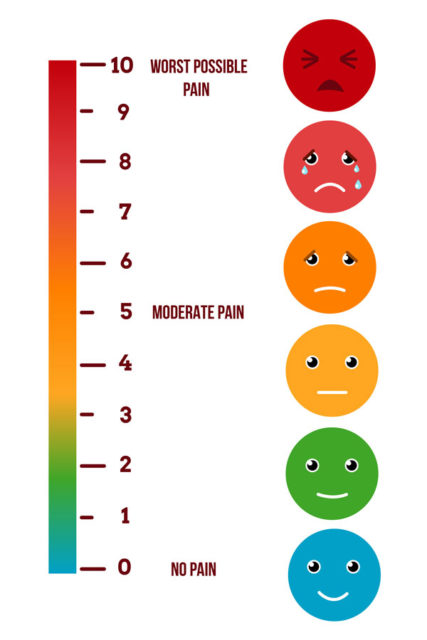Pain and autism
Pain is a complex sensation that is mediated by both the peripheral and central nervous systems. In the peripheral nervous system, pain signals are generated by nerve fibers called nociceptors that respond to harmful stimuli. These signals are then transmitted to the brain through the spinal cord, where they are processed and interpreted as pain. In the central nervous system, pain signals are processed in several areas of the brain, including the thalamus, anterior cingulate cortex, and insula. The interpretation of pain can also be influenced by previous experiences and emotional states, leading to the phenomenon of chronic pain.

Pain is also modulated by various neurotransmitters, including endorphins and opioids, that work to reduce pain signals in the brain. In addition, the process of pain modulation can be influenced by cognitive and emotional factors, leading to the experience of placebo or nocebo effects. In recent years, research in the field of neuroscience has improved our understanding of the mechanisms of pain, and this has led to the development of new treatments and therapies to alleviate pain and improve quality of life
Pain production and inhibition are complex processes in the nervous system that help us experience and manage pain. Pain production involves the activation of nociceptors, specialized nerve endings that respond to potentially damaging stimuli such as heat, pressure, or tissue damage. When these nociceptors are activated, they send signals to the spinal cord and brain, which are processed as pain.
Pain inhibition, on the other hand, involves the activation of inhibitory mechanisms that dampen or block pain signals as they travel through the nervous system. This can occur at various levels of the nervous system, including the peripheral nerve endings, spinal cord, and brain. Inhibitory mechanisms can include the release of pain-relieving chemicals like endorphins, changes in the transmission of nerve impulses, and the activation of descending pain pathways that travel from the brain to the spinal cord and modulate pain signals. The balance between pain production and inhibition is crucial for our perception of pain, and disruptions to this balance can result in chronic pain conditions.
A study published in the journal Pain 1 by researchers from Tel Aviv University has found that individuals with autism spectrum disorders (ASD) experience pain more intensely than the general population and have difficulty adapting to it. This contradicts the commonly held belief that people with autism are indifferent to pain.
The researchers hope their findings will lead to better treatment by medical personnel, caregivers, and parents for individuals with autism who may not always express their experience of pain in typical ways.
Contrary to the long-standing view that “people with autism feel less pain” or are “indifferent to pain,” evidence for this belief was based on their tendency to engage in self-injury. However, self-injury could stem from attempts to relieve pain and may be a way to unconsciously activate a physical mechanism of “pain inhibiting pain” 2.
Approximately 10% of the general population experiences sensory modulation dysfunction, which results in hypersensitivity and impacts daily life. For instance, these individuals struggle with ignoring or adapting to stimuli such as flickering lights, humming air conditioners, or crunching popcorn. Autism is associated with a higher rate of sensory modulation dysfunction, with 70-90% of individuals with autism experiencing this issue. It is also a diagnostic criterion for autism and is linked to its severity.

The study, which involved 104 participants (52 with high-functioning autism and 52 controls), is the largest on record to examine pain in people with autism. The participants underwent quantitative sensory tests to assess their pain-facilitating and pain-inhibitory responses, as well as self-reported anxiety, pain sensitivity, and sensory sensitivity. The tests involved monitoring the relationship between stimulus and response, with the investigator using a computer to monitor the duration and intensity of the stimulus, and the participant rating the pain felt on a 0-100 scale.
The study found that individuals with autism had higher pain scores from various types of stimuli (single, repetitive, and tonic), which were correlated with their sensitivity to pain in daily life but not with psychological distress. This pain hypersensitivity was attributed to the severity of autism and sensory hypersensitivity to everyday stimuli. The subjects with autism were able to inhibit phasic pain but not tonic pain during the conditioned pain modulation test. The results challenge the belief that individuals with autism are indifferent to pain and highlight the need for caregivers to be aware of pain sensitivity in autism.
The response to pain in individuals with autism may be linked to the imbalance of excitatory and inhibitory systems, leading to a pain modulation profile with less efficient inhibition and a facilitatory state. This is called a pronociceptive pain modulation profile. Further studies are planned to investigate brain activity during pain in individuals with autism and subgroups within this population.
More on pain:
Feeling another’s pain
More pain than expected
References
- Hoffman T, Bar-Shalita T, Granovsky Y, Gal E, Kalingel-Levi M, Dori Y, Buxbaum C; Yarovinsky N, Weissman-Fogel I (2022) Indifference or hypersensitivity? Solving the riddle of the pain profile in individuals with autism. Pain doi: 10.1097/j.pain.0000000000002767 ↩
- Tel Aviv University Press Office (2023) People With Autism Experience Pain at a Higher Intensity. Neuroscience News ↩